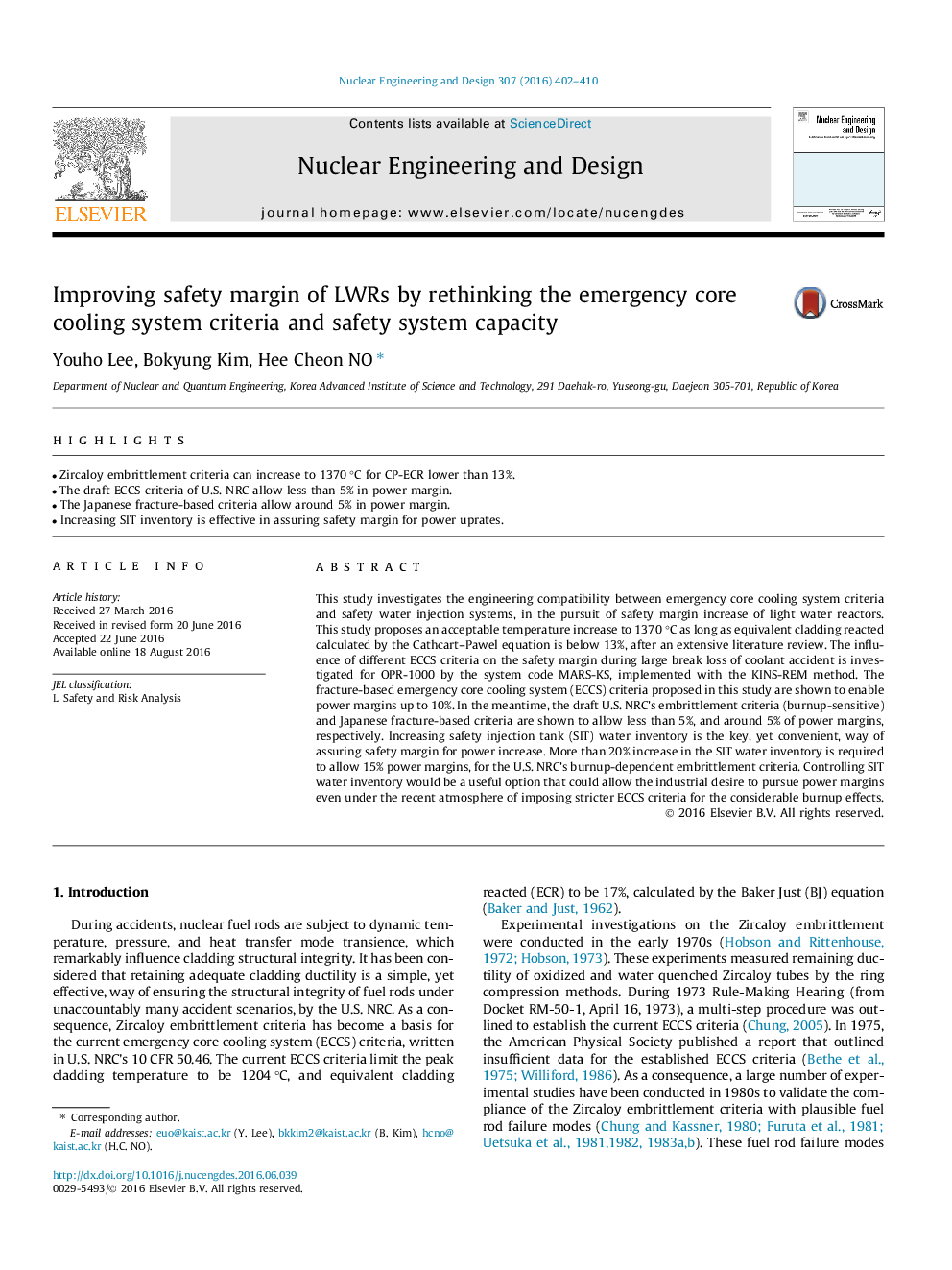| Article ID | Journal | Published Year | Pages | File Type |
|---|---|---|---|---|
| 6759951 | Nuclear Engineering and Design | 2016 | 9 Pages |
Abstract
This study investigates the engineering compatibility between emergency core cooling system criteria and safety water injection systems, in the pursuit of safety margin increase of light water reactors. This study proposes an acceptable temperature increase to 1370 °C as long as equivalent cladding reacted calculated by the Cathcart-Pawel equation is below 13%, after an extensive literature review. The influence of different ECCS criteria on the safety margin during large break loss of coolant accident is investigated for OPR-1000 by the system code MARS-KS, implemented with the KINS-REM method. The fracture-based emergency core cooling system (ECCS) criteria proposed in this study are shown to enable power margins up to 10%. In the meantime, the draft U.S. NRC's embrittlement criteria (burnup-sensitive) and Japanese fracture-based criteria are shown to allow less than 5%, and around 5% of power margins, respectively. Increasing safety injection tank (SIT) water inventory is the key, yet convenient, way of assuring safety margin for power increase. More than 20% increase in the SIT water inventory is required to allow 15% power margins, for the U.S. NRC's burnup-dependent embrittlement criteria. Controlling SIT water inventory would be a useful option that could allow the industrial desire to pursue power margins even under the recent atmosphere of imposing stricter ECCS criteria for the considerable burnup effects.
Related Topics
Physical Sciences and Engineering
Energy
Energy Engineering and Power Technology
Authors
Youho Lee, Bokyung Kim, Hee Cheon NO,
